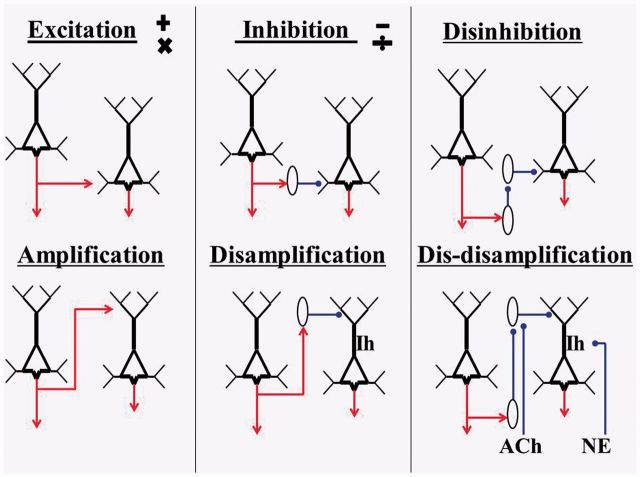Figure 2.
Primitive interactions from which neocortical circuits are built. The generic form of pyramidal cells is shown in a way that distinguishes their apical and basal trees. No attempt is made to show any columnar organization. The two cells shown in each of the six sections could be in either the same or different columns, or even in different cortical regions. They are shown at different heights in the diagram simply for diagrammatic convenience. Hyperpolarization-activated currents are shown as Ih. Inhibitory interneurons are shown as ovals. Cholinergic inputs are shown as ACh. Adrenergic inputs are shown as NE. Inputs from both of these subcortical modulatory systems tend to increase activation, and presumably in complementary ways. The outputs of individual neurons could combine these primitives in various ways. For example, the outputs of a given pyramidal cell could be excitatory at some of its projective sites and amplifying at others, or an inhibitory interneuron could combine disinhibition with dis-disamplification by inhibiting interneurons that target the soma as well as those that target the tuft.

